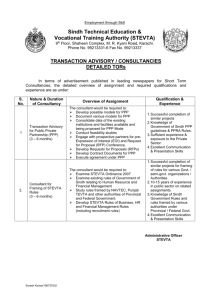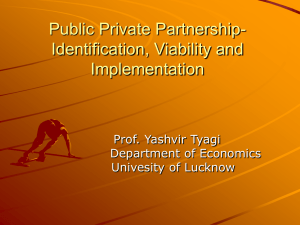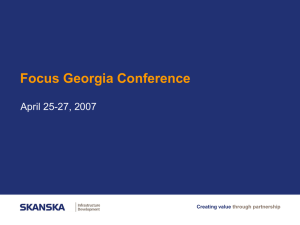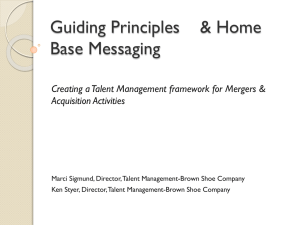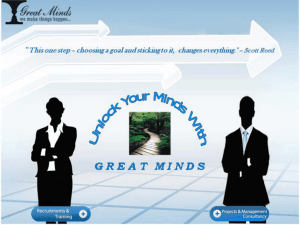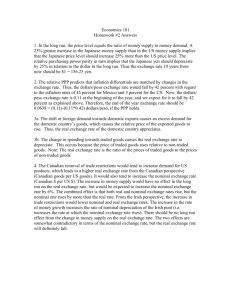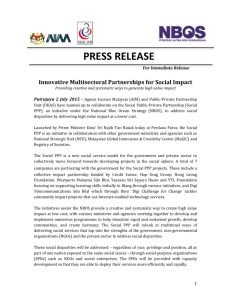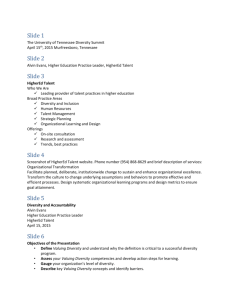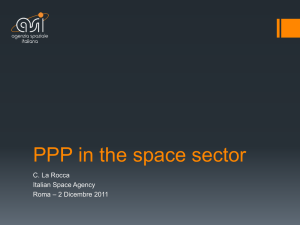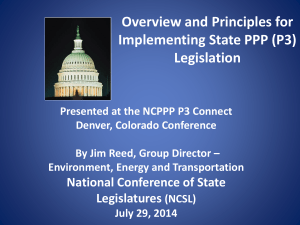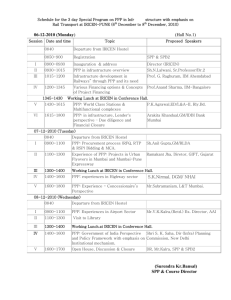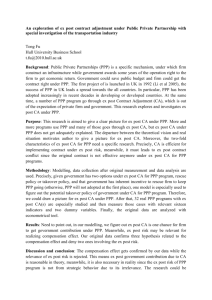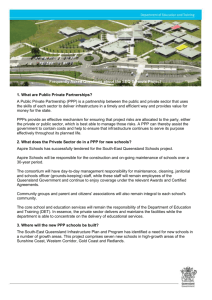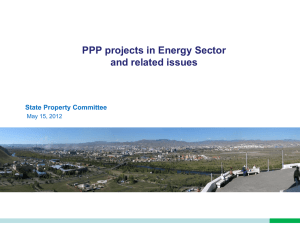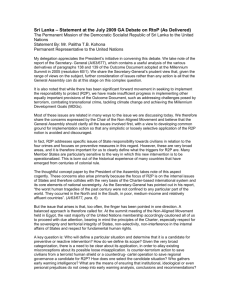PPT - Teacher Education
advertisement
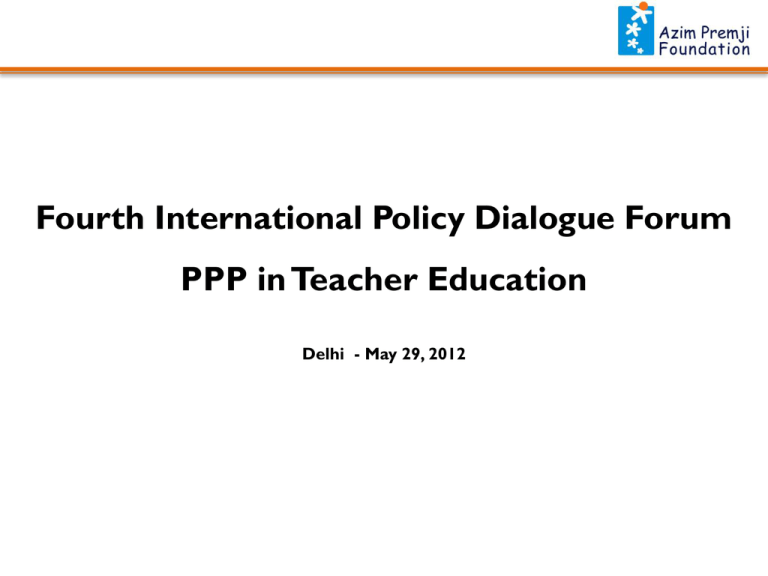
Fourth International Policy Dialogue Forum PPP in Teacher Education Delhi - May 29, 2012 The Three Critical Players for Development 2 Government • Legitimacy (in democracies, elected by popular mandate) & Permanency • Constitutional responsibility for universal quality education • Have resources – people, finances, organization structure • Serious gaps in execution • Absence of accountability – uncertain tenure, lack of risk-reward system • Mismatch between challenges and available talent Grass without roots 3 Civil society organisations (not-for-profits) • Passionate, competent, qualified people • Credible with the communities • Dependence on external funding – unable to plan long term • Lack of outcome orientation and accountability • Do not network adequately and effectively Roots without grass 4 The Corporates • Have resources – people and finances – backed by risk rewards • Performance / results oriented • Some - models in good governance • Too self-centred – profits, shareholders, customers and employees • Too focussed on brand leverage - “showing” than “doing” • Social and environment consciousness – not deep enough Fruits without the grass and the roots 5 Myths about public private partnership 1. Private sector is synonymous to efficiency, good governance, quality & results 2. Private sector has the necessary competence to deliver quality education 3. Private partner means – corporate organisation 4. Many private partners will be willing to establish schools under their CSR 5. It is possible to run a high quality school in a sustainable manner thru fees 6 General caveats on PPP 1. Any partnership is a difficult proposition – both at organizational and individual level 2. Partners come with different objectives, expectations, cultural and human settings 3. Successful partnerships are based on position of strength, mutual respect and deeper connect with the larger philosophical approaches to work 4. Commercial approach of PPP in Indian education are unlikely to work 5. High clarity needed on objectives of PPP and criteria to choose partner 7 For serious PPP the Government will need 1. Enormous political will and continuity – flavour of the year will not work 2. A serious mindset to create enabling frameworks – e.g. Single window clearances 3. Flexibility to suit individual cases 4. Going beyond the rhetoric 8 Public Private Partnership by Azim Premji Foundation 9 Possible approaches to drive change Approach Example organization/ situation ▪ Michael & Susan Dell Foundation Funder ▪ Bill & Melinda Gates Foundation (also partly catalyst and doer) ▪ Ford Foundation and Catalyst Rockefeller Foundation in the Green Revolution Some Challenges ▪ Prioritization of areas to avoid fragmented funding ▪ Selection of projects that are well-designed for impact and long term sustainability ▪ Strong tracking ▪ Bringing together relevant stakeholders ▪ Strong program management abilities (if the organization is also the program manager) ▪ Access to expertise and funds as required (potentially from outside the organization) ▪ Some large foundations do Doer Talent creator this, in addition to funding/catalysing ▪ Clarity of linkage between near term activities and outputs, to bigger picture of change ▪ Strong tracking of outputs and longer term outcomes ▪ Most smaller scale non-profits ▪ Sustained funding model ▪ TISS ▪ Aga Khan University ▪ Teach for America/India ▪ Appropriate selection and orientation of incoming people, to ensure that they become change agents in the long term 10 Our approach to partnership with Government 1. Working with Government and larger Eco-system: If you want to contribute to changing the system you must understand it thoroughly. Need to get a benign entry. 2. No Silver Bullets: Spending time in understanding issues and evolving possible solutions together 3. Focus on change at larger scale: Islands of excellence have limited or no value. A policy level change that creates a smaller but large scale change is more relevant 4. Building human resources and competence: a long term commitment to building necessary human resources is important to continuously evolve, sustain and meet ever changing challenges. 5. Supplement Government work and not substitute it: focus on issues that the Government is not focussing, do not invest in infrastructure 6. Ground level connect and value building: senior leaders constantly change for political and organizational reasons – it is critical build value at ground level 11 Our overall strategy • Our strategy has four distinct strands that will unfold synergistically, creating the possibility of deep, at-scale and sustained impact : 1. TALENT: Develop a critical mass of people with vision, competence & deep motivation to engage in social action. This includes developing fresh talent and enhancing capacity in the existing talent (estimated at 7 mln. people) 2. KNOWLEDGE: Create knowledge & evidence to provide deeper insights into the solutions to challenges in education and development in Indian context and culture. Create a culture of evidence based decisions in policy & program 3. INSTITUTIONS: Establish strong institutions that will develop talent, build knowledge, and work for reform in education and allied developmental areas on a sustained basis 4. SOCIAL PRESSURE/DEMAND: Through strong institutions, continuing education, field impact and awareness building, change the way communities and functionaries think about issues in education and development – so that they begin to demand higher quality 12 Areas of PPP 1. Capacity Building: At Institutional level (E.g. SCERT, DIET, District and Block Offices) Individual Levels (School Leaders, Teacher Educators) Academic Support System, Leadership & Management area,Teacher Learning Centres 2. Institution Building: Participate in visioning, designing, execution of institutions such as DIETs, SIEMAT, SISLEP etc. Contribute through relevant people resources 3. Policy & Research: Participate in issues such as curriculum development, teacher education policy, research in areas such as gender, structuring of a school, role of technology in education etc 4. Evaluation & Assessment: evaluation of Teacher Education institutions, teacher assessment, learner assessment, 5. Community education: Illustratively, awareness of RtE, capacity building among SMCs, NGOs, SHGs etc 13 5 Year Goal and Where We Stand 5 Year Goal Current Status University 350 faculty, 3500 full-time students Reach out to 500,000 existing functionaries 2 Masters programs, 90 students Admissions announced for 200 students Preparation on for increasing range of programs for internal and external audience Field Institutions 50 District & 8 State Institutes 7 District & 3 State Institutes Schools 100 own schools 6 schools commissioned i Institute for Assessment & Accreditation Establish as a credible national resource for institutional assessment. Working on developing ready to use assessment frameworks for school, teachers and learners 14 A Dream of a Just, Equitable, Humane and Sustainable Society Thank You




